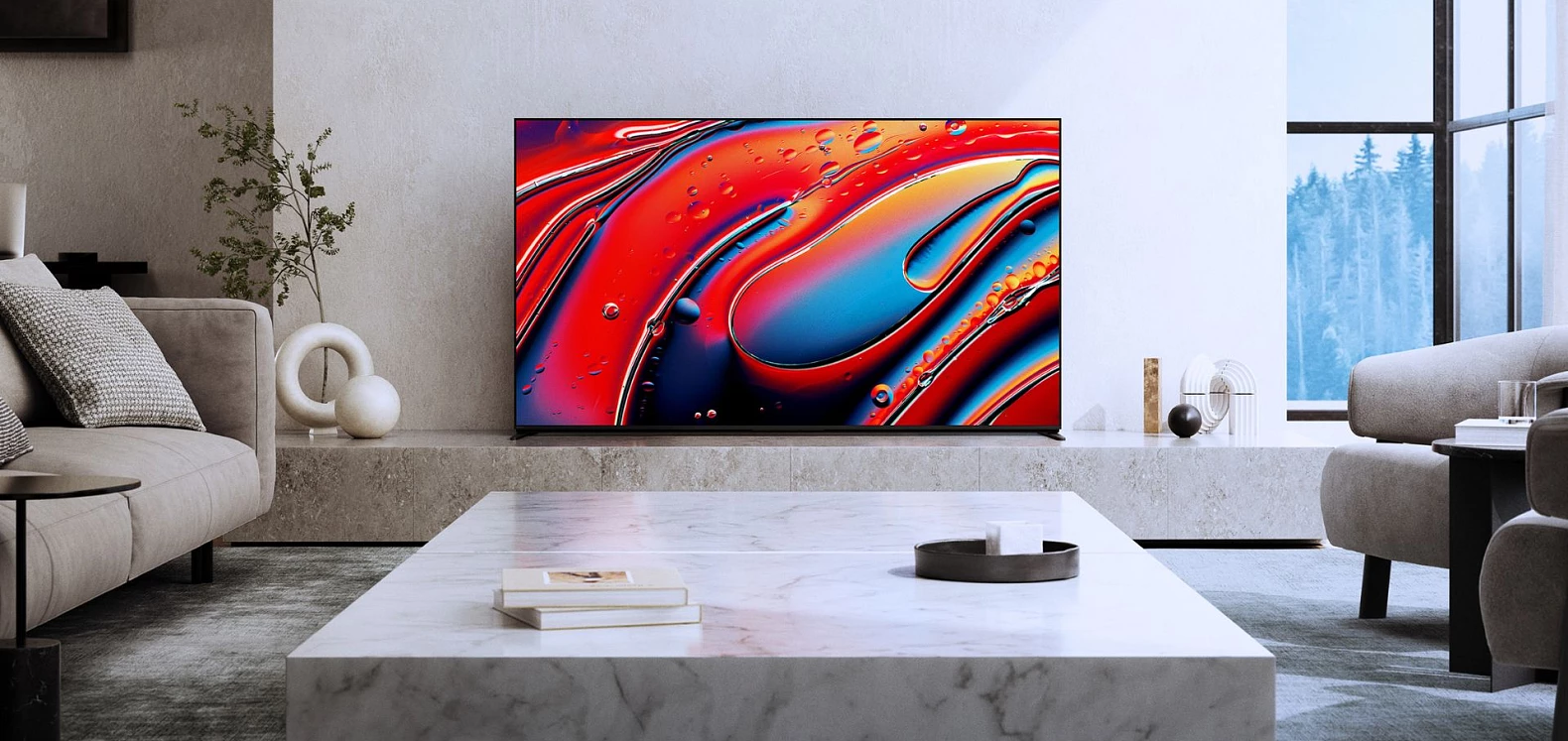
How Long Does a Smart TV Last? Average Lifespan & Maintenance Tips
The lifespan of a smart TV depends on the brand, usage habits, and tech evolution. My mid-range smart TV lasted nearly 8 years, but some people upgrade their Sony models within 5 years for better features. On average, a smart TV lasts between 5–8 years, influenced by software updates, hardware quality, and maintenance. Routine care, like checking the power supply, helps extend its lifespan.
When considering whether to repair or replace a smart TV, think about the cost of upkeep versus replacement. Many LCD models last 5 to 10 years, but if repairs are costly, it might be time to invest in a new one. A well-maintained TV can last longer with updates and proper care. Knowing how long a smart TV lasts helps you make informed decisions without rushing into a replacement.
Understanding the Lifespan of Smart TVs
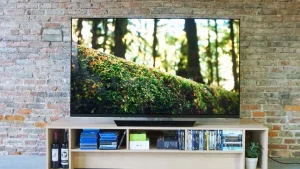
From my years of testing and reviewing TVs, I’ve found that the lifespan of a smart TV depends on display technology, brand, and usage. When considering how long does a smart TV last, OLED models typically last between 40,000 to 100,000 hours, which translates to 4.5 to 13 years, depending on use and maintenance. LED TVs, in general, tend to last longer, especially when used with moderate brightness. The longevity of your TV can vary based on care, particularly how well the ports are maintained. Understanding how long does a smart TV last can help you make more informed decisions about your investment.
The lifespan of a smart TV depends on display technology, brand, and usage. OLED models last between 40,000 to 100,000 hours, while LED TVs tend to last longer, especially with moderate brightness. Brands like Samsung typically last 7 years, while Vizio models last 7-10 years. When wondering how long a smart TV lasts, consider usage habits, maintenance, and updates for a longer lifespan
What is the average lifespan of a smart TV?
From setting up new TVs to upgrading my own, I’ve learned that the lifespan of a smart TV mostly depends on daily use and the type of screen. OLED TVs tend to last longer, while most LED TVs are designed for 40,000 to 60,000 hours of use, equating to over 10 years of regular use. The key factors in longevity are usage habits, such as how often you watch and how high you set the brightness. Understanding these factors can help you care for your investment and plan your upgrade wisely.
Component wear, especially the backlight, is a major factor in how long a smart TV lasts. LEDs generally last longer than OLEDs since OLEDs can suffer from burn-in, while LEDs hold up better over time. On average, an LED TV lasts about 6.8 years, but with proper care, you can extend that life significantly. By choosing the right display technology and maintaining your TV, you can enjoy clear, bright performance for years to come.
What Affects a Smart TV’s Real Lifespan?
When considering how long a smart TV lasts, it depends on the manufacturer’s build quality, internal components, and usage. OLED models last 40,000 to 100,000 hours, while LED TVs last longer with moderate brightness. Samsung TVs may age faster with heavy use, while LG TVs perform well with casual use. Brands like Sony, LG, and Samsung rigorously test their products to ensure durability. For more information on the best deals and product reviews, check out BestVouch.
The advertised lifespan of a smart TV typically reflects the maximum time before picture quality fades or software updates stop, especially for LED TVs. If you choose a reputable brand like LG and take good care of your TV by using screen savers and adjusting settings, you can expect a solid lifespan without overspending. Understanding how long does a smart TV last helps you make informed decisions when investing in your next TV. By knowing how long does a smart TV last, you can better evaluate which model will suit your needs and stand the test of time.
What Factors Can Influence the Longevity of a Smart TV?
From my experience, the lifespan of a smart TV depends on key factors like display technology, connectivity ports, and daily usage. If you’re wondering how long does a smart TV last, OLED TVs offer stunning picture quality but can wear out faster with heavy use, making it important to monitor usage for longevity. In contrast, LED TVs typically last longer, though their picture quality may not be as sharp as OLEDs. Understanding how long a smart TV lasts helps you make the best choice based on your usage habits and the type of TV technology you prefer.
When considering how long a smart TV lasts, comparing brands like Samsung and Sony is helpful, as both offer solid options. Sony often provides more frequent firmware updates, which can help extend the life of the TV. Ultimately, the more a TV is used, the shorter its lifespan, which I learned firsthand when recommending an LG TV to a friend who watched TV for 16 hours daily. This experience made me realize that how long a smart TV lasts largely depends on usage habits. So, if you’re wondering how long does a smart TV last, remember that usage frequency plays a significant role in its longevity.
Factors Affecting Smart TV Longevity
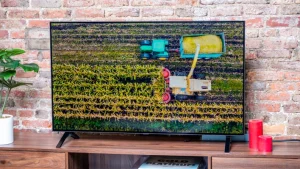
In my experience, the manufacturer and the type of hardware inside your TV are crucial for how long a smart TV nowadays will last. For instance, mini LED TVs and OLED panels rely on different display technology, which directly affects durability. OLED screens provide amazing picture quality but can suffer from pixel wear if the brightness in the settings menu is too high, unlike CRT displays which have different longevity factors. When considering how long does a smart TV last, it’s essential to think about the display type, how it’s used, and settings like brightness to extend its lifespan.
LED TVs like the TCL HDTV tend to last longer due to slower pixel degradation. When asking how long does a smart TV last, adjusting settings like brightness on a 4K TV is key to extending its lifespan. Combining good hardware with mindful use ensures your TV lasts longer. With proper care, you can maximize how long does a smart TV last.
How Does Usage Frequency Impact a Smart TV’s Lifespan?
From my experience, TVs nowadays are built to handle different levels of use, but how long does a smart TV last often depends on how frequently it’s turned on. For a typical user who watches around eight hours of TV daily, a smart TV usually stays in good working condition for several years without needing major maintenance, especially if you clean your TV regularly. However, if a TV runs almost 24 hours a day, the chances for its parts to falter increase, meaning it might need a repair service sooner. So, when considering how long does a smart TV last, it’s important to factor in how much you use it and the care it receives.
The operating system also plays a role; if it slows down or bugs appear, it can affect the overall lifespan and the performance of the ports, even if the hardware is fine. So, balancing use helps keep your TV running longer.
How Display Technology Affects Smart TV Durability
From my experience with different smart TVs, display technology plays a major role in determining how long the TV lasts. OLED screens use self-illuminating pixels, offering excellent contrast and thinner panels, but they can suffer from burn-in if static images stay on the screen for too long. In contrast, mini LED TVs use a precise LED backlight system, which is more durable and less prone to image retention, making them last longer with regular use compared to standard LCDs.
Choosing the right display technology, like OLED or mini LED, can significantly impact the longevity and picture quality of your TV. Mini LED TVs offer a balance of brightness and durability, often outlasting OLEDs under normal conditions, especially when the ports are well-maintained. When compared to older CRT options, modern LED and mini LED designs generally provide better longevity and performance.
How the environment where the TV is placed affects its lifespan
From my experience with Samsung smart TVs at Walmart, the environment and placement of your televi
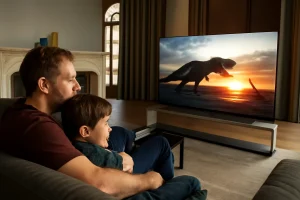
sion Samsung play a big role in how long it will last. If your TV is in a bright room with direct sunlight, the brightness settings may need to be higher, which can cause more wear on the screen over time and potentially reduce the life of your TV.
Using a dimmer or adjusting the settings menu to lower brightness when possible helps reduce this risk. Placing the TV in a cool, shaded spot with stable temperature also extends its life by preventing overheating or damage from heat exposure. So, even when shopping during Walmart TV sales Samsung, think about where you’ll place your TV to make it last longer.
Signs Your Smart TV May Be Deteriorating
It’s not always obvious when a smart TV is reaching the end of its life, but a few things usually happen, such as reduced performance or the need to clean your TV more frequently, which can be a sign that your TV is broken. The screen might dim or flicker, and the picture quality will noticeably decline, which are signs that it might be time to get a new 4K TV. Sometimes, the system can falter or freeze during streaming, showing signs of software or hardware deterioration.
These symptoms often indicate internal problems that repairs might not fully fix, potentially shortening the life of your TV. Based on what I’ve seen with different brands, including TCL TV reviews, waiting too long to replace a failing TV can reduce your viewing experience drastically.
Signs Your Smart TV May Be Failing
From my experience with smart TVs, knowing when you should replace your smart TV or decide to repair TV issues early can save a lot of trouble, especially after many hours of use, and using a surge protector can help prolong its life. One clear sign your TV might start to falter is when the picture quality begins to decline noticeably. You might see issues like ghosting, where images leave a shadowy trail, or worse, burn-in, which permanently marks the screen with leftover images, especially if the ports are not properly managed.
These problems usually mean the internal parts are aging or the display is wearing out. Catching these symptoms early helps you decide if a repair is worth it or if it’s time to get a new TV instead of continuing with an old set, especially if you want to keep it in good condition.
Signs Your Picture Quality Is Getting Worse
When the brightness on your Samsung 55 inch or TCL 55 inch Roku TV starts to fade, it’s a clear sign the picture quality may be declining, which could affect the HDMI port functionality. You might notice that the colors aren’t as colorful as before, and the details in shadows or highlights become harder to see.
From my experience with a Sony Bravia X90L, changes in contrast and duller images are often tied to aging screens or worn-out components, which can typically last around 7 to 10 years. Checking different picture mode settings or picture presets can sometimes help, but if you turn the TV off frequently, it may extend its lifespan.
When to Repair or Replace Your Smart TV?
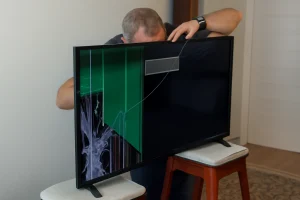
Deciding whether to repair a TV or buy a new TV often depends on the cost and availability of parts and components. From my experience, if your Sony TV or any brand is still in good working condition but faces minor issues, contacting the manufacturer for support can save you money.
However, when the repair costs near or exceed the price of an upgraded Sony TV, it’s smarter to invest in a new model that offers better features and longer life than an aging CRT. Always weigh the expense of fixing your current TV against the benefits of improved technology with a new TV, as the average lifespan of an LED can often make upgrades worthwhile.
How Long Does a Smart TV Last?
From my experience, a smart TV’s lifespan largely depends on how well you maintain it. For the best longevity, it’s important to clean the screen and vents regularly to prevent dust buildup, which can cause overheating and damage to your LED TV’s performance. Adjusting your brightness settings can also reduce strain on the display and its ports, extending the TV’s life without sacrificing picture quality.
Many people overlook the importance of keeping the software and firmware up to date. Regular updates fix bugs and improve performance, ensuring that your Samsung TV runs smoothly and stays competitive with others on the market. Additionally, using the energy-saving mode lowers power consumption and reduces wear on the hardware. By combining these tips—cleaning, updating, adjusting settings, and using energy-saving features—you can extend your smart TV’s lifespan beyond the typical 7 to 10 years.
How Regular Cleaning Habits Can Boost Your TV’s Lifespan and Performance
From my experience, cleaning your Samsung TV 55 inch or TV Vizio 55 inch regularly can really extend the lifespan of your device and enhance the performance of its ports. Dust tends to settle on the components inside and outside the TV, including the ports, which blocks proper airflow and can affect performance.
This makes the TV work harder and can cause overheating, reducing its performance and life. Simple maintenance like gently wiping the screen and vents with a soft cloth, and using compressed air to clear dust from the vents, keeps everything running smoothly and can help your TV set last longer. When you clean your TV regularly and maintain good airflow around the ports, you avoid extra strain on the internal components and help your smart TV last longer while keeping picture quality crisp.
How Do Software Updates Affect the Lifespan of a Smart TV?
From my experience, firmware updates and software improvements play a big role in how long does a smart TV last and stay useful, especially with Samsung TVs. For example, a Samsung TV 55 inch I owned kept running smoothly because the manufacturer regularly pushed updates to the operating system and ensured compatibility with various ports. These updates fix bugs and add new features, which helps the TV stay fast and compatible with new apps.
Without regular firmware updates, even the best buy smart TVs can become slow or lose access to important apps, shortening how long does a smart TV last and potentially affecting the performance of connected ports. So, keeping the TV’s software fresh and ensuring the ports are clean is just as important as the hardware itself when considering how long does a smart TV last. Regular maintenance and updates are key to extending how long does a smart TV last, ensuring you get the most out of your investment.
Best Practices for Optimal Settings and Usage
From my experience, adjusting the settings menu on your Samsung 60″ LED smart TV or any model is key to extending its lifespan and answering the question of how long does a smart TV last. Switching from the bright Vivid mode to softer settings like Movie mode or Filmmaker mode reduces stress on the screen, especially for OLEDs, which are more prone to burn-in, ultimately impacting how long does a smart TV last.
Fine-tuning the brightness and contrast settings in these picture modes protects the display and maintains sharp image quality over time, which plays a significant role in how long does a smart TV last. This tip works just as well for smaller models like the Samsung 32″ LED smart TV, and by avoiding maximum brightness all the time, you can improve how long does a smart TV last. Personally, I use Filmmaker mode for movies to enjoy accurate colors, and softer modes for everyday use, which keeps the picture vibrant and extends the TV’s life, directly answering how long does a smart TV last.
When Should You Replace Your Smart TV?
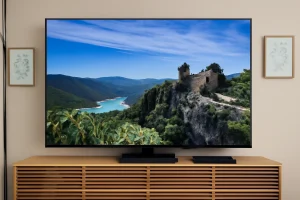
From my experience, how long does a smart TV last depends a lot on the working condition and brand. For example, a Samsung 65 class LED HDTV can often last many years, but over time, advancements in technology mean newer TVs come with better features that can make your old set feel outdated. If your Samsung 65 LED TV starts showing signs like a dimming screen or slow responses, it might be time to think about how long does a smart TV last.
The cost of repair versus buying a new model with improved smart functions also matters when considering how long does a smart TV last. When you notice your TV struggling to keep up with apps or picture quality, or if it no longer supports the latest updates, these are signs that how long does a smart TV last is coming to an end, and it’s time to consider a replacement.
Signs It’s Time to Replace Your Smart TV
From my experience, even a solid Samsung 55 inch or a Sony Bravia 65 inch TV won’t last forever without showing clear symptoms of wear that indicate the life span of your TV is diminishing. When the performance of your Samsung 60 LED TV starts to falter, like slow app loading or poor picture quality, it’s a strong hint of deterioration that can affect streaming services. Also, if your smart TV feels outdated and can’t support new apps or updates, it’s usually better to upgrade rather than struggle with constant glitches. These signs aren’t just annoying, they indicate your device is nearing the end of its useful life.
In my opinion, recognizing these early symptoms helps avoid frustrating viewing experiences, especially when it comes to the longevity of your TV set, which can typically last 7 to 10 years. Instead of waiting for a total breakdown, watch for lagging menus or flickering screens, common in aging models like the Samsung 55 inch or Sony Bravia 65 inch TV, as these symptoms might indicate it’s time to upgrade to a newer model. Such deterioration is natural, but knowing when the TV needs to be replaced saves you time and improves your entertainment quality.
When Should You Upgrade Your TV Because of New Technology?
Technology advancements happen quickly, making older TVs feel outdated and prompting users to consider how long does a smart TV last before needing to be replaced. If you’re an A/V enthusiast or a gamer using consoles like the Xbox Series X or PlayStation 5, upgrading to a HDR TV or a model with 4K support can improve your experience. For example, moving from a basic model to something like the Sony X95K or the Hisense Mini LED TV brings better picture quality and faster response times, making it a worthwhile investment for those wondering how long does a smart TV last.
However, if you’re happy with mid-range TVs, waiting for LG TVs on sale or something like the Best Buy Insignia TV can give you great value without needing to upgrade too often. In my experience, many people keep their smart TVs for about 6 to 8 years before the newest features make an upgrade worthwhile, since how long does a smart TV last typically falls in that range, providing better hours of TV enjoyment. If you’re asking how long does a smart TV last, modern LED TVs often last that long, making it easier to enjoy your current model longer before considering a replacement.
Key Factors Before Buying Your New Smart TV
When considering how long does a smart TV last, it’s important to look at the brand, available support, and the type of TV you’re purchasing. Opting for reputable brands like Samsung, whether it’s a 55-inch, 60-inch LED, or 75-inch QLED model, often guarantees better features and a longer lifespan. Your budget also plays a role, especially when comparing the average lifespan of LED TVs with older CRT models. Stores like Walmart and Best Buy offer great deals, but it’s essential to weigh the price against how long does a smart TV last. For more detailed information on the lifespan of smart TVs, check out this guide from CEDIA.
The size of the TV also impacts its lifespan. Larger models, like a 50-inch or 65-inch, may require more care to maintain picture quality, particularly in relation to the ports for external devices. In my experience, choosing a model with reliable customer support can help extend the TV’s life by addressing any issues early on. This not only ensures your TV lasts longer but also enhances your overall satisfaction. Be sure to consider the features that matter most to you and how long does a smart TV last, especially for streaming services.
Key Takeaways on Smart TV Longevity and Investment
-
When upgrading to a Sony TV or any smart TV, consider your budget and the TV’s performance to understand how long does a smart TV last.
-
Think about how long does a smart TV last to help determine when it might need to be replaced.
-
Regular tasks like updating firmware and keeping your TV cool can improve how long does a smart TV last.
-
Maintaining your TV ensures all ports and connectivity options function properly, impacting how long does a smart TV last.
-
Knowing these facts helps you make informed decisions about ports and connectivity without rushing into an upgrade, all while considering how long does a smart TV last.
-
A well-kept smart TV can serve you for years, potentially answering the question how long does a smart TV last.
-
Taking care of your TV can delay the need for a replacement and extend how long does a smart TV last.
-
If you’re wondering how long does a smart TV last, maintaining it well will ensure you get the most out of your investment.
FAQs
How do you know when your smart TV is going bad?
One of the most common signs your TV is aging is the appearance of faded spots, which can indicate that the lifespan of your TV is nearing its end. These usually show up on the TV screen and can affect picture quality over time.
Do smart TVs slow down with age?
Modern TVs, especially QLED TVs, are full of advanced features and apps that enhance your viewing experience, particularly when using streaming services through various ports. This makes them smart, versatile, and equipped with various ports for connectivity. But over time, background services can run constantly and slow them down.
How do you know when your smart TV is going bad?
One of the most common signs your TV is aging is the appearance of faded spots, which can indicate that the lifespan of your TV is nearing its end. These usually show up on the TV screen and can affect picture quality over time.
Do smart TVs slow down with age?
Modern TVs, especially QLED TVs, are full of advanced features and apps that enhance your viewing experience, particularly when using streaming services through various ports. This makes them smart, versatile, and equipped with various ports for connectivity. But over time, background services can run constantly and slow them down.

